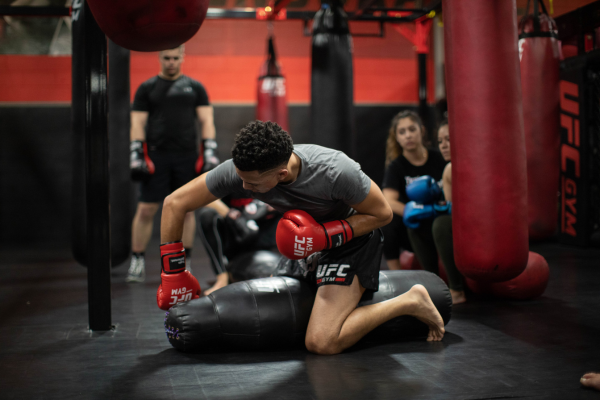Kickboxing Weight Categories: Everything You Need to Know + Weigh-In Tips


Amateur kickboxers compete in carefully specified weight classes to keep the sport fair and safe. For men, these classes typically include lightweight (up to 63.5 kg), welterweight (up to 67 kg), and heavyweight (over 91 kg). For women, there are similar divisions, such as lightweight (up to 56 kg) and middleweight (up to 70 kg).
This format ensures that both novice and advanced amateur fighters face equal opponents. It emphasizes technique and strategy over brute force, which is crucial to skill development at this level.
Weight classes for professionals
In professional competitions, weight categories are often more strict and extensive. In addition to familiar classes such as bantamweight (up to 53.5 kg) and cruiserweight (up to 86 kg), there are also specific divisions depending on the organization, such as Glory , ONE Championship , or other global federations. For professionals, weight class means more than just fairness. It affects preparation, strategy, and sometimes even health. That's why professional fighters carefully plan their diet, training, and hydration to stay within their class and perform at their best.
The process of official weighing
An official weigh-in usually takes place 24 to 48 hours before the bout. Fighters step onto a calibrated scale under the supervision of match officials to ensure they meet the weight requirements for their category.
The process is strictly regulated: fighters must wear clothing approved by the organization, usually just sports underwear or a light outfit. This minimizes deviations and ensures fair measurements. Depending on the competition, fighters may be asked to weigh in multiple times, especially if there is any doubt about the accuracy of the measurement.
Common challenges when weighing
Weigh-ins often come with stress and challenges. Some fighters struggle to reach their target weight, especially if they are overweight shortly before the weigh-in. This often leads to intensive measures such as water cutting, where fighters lose weight quickly by eliminating fluids. While effective, this can be risky to health and performance. Other challenges include unexpected technical issues, such as a broken scale, or organizational delays that add extra pressure. Good preparation and mental focus are crucial to dealing with these obstacles.
The importance of a balanced diet
A balanced diet plays a crucial role in preparing for a weigh-in. It not only helps fighters manage their weight, but also stay fit and energetic during training. Focus on foods that are rich in protein, healthy fats, and complex carbohydrates, such as chicken, avocados, and sweet potatoes.
Avoiding processed sugars, salt, and heavily processed foods can help minimize water retention and unwanted weight gain. Professional fighters often work with a nutritionist to create a customized diet plan that will help them reach their weight safely and effectively.
Hydration and weight loss
Hydration is essential in preparation for a weigh-in, but it also plays a major role in weight loss. Many fighters use controlled hydration to lose weight quickly without compromising their performance.
A common method is to reduce water intake in the last 24 hours before weigh-in, combined with activities such as light sweating in a sauna. However, it is important to apply these techniques carefully to avoid dehydration and health risks. After weigh-in, it is crucial to quickly replenish fluids and electrolytes to recover and be ready for competition.
Common mistakes and how to avoid them
One of the biggest mistakes fighters make is starting their preparation for a weigh-in too late. Many fighters underestimate how much time it takes to lose weight healthily and effectively. This often leads to last-minute crash diets or intensive water cutting, which negatively impacts performance and health.
By starting early – ideally a few weeks before the weigh-in – fighters can lose weight in a sustainable way. This gives them the space to stay focused on technique and training, without the added stress of their weight.
Unhealthy weight loss methods

Unhealthy methods, such as extreme fasting, excessive use of diuretics or prolonged sauna stays, are not only ineffective in the long term, but also dangerous. These techniques increase the risk of dehydration, fatigue and susceptibility to injury.
The key to success is a balanced approach that combines nutrition, training and recovery. This will not only ensure healthy weight loss but will also help you stay fit and sharp for the competition.
At Fightstyle we understand the importance of good preparation. That is why we not only offer high-quality martial arts equipment, but also advice and guidance to help you achieve your goals. Visit our blog for more tips, or discover everything you need to go into your next match perfectly prepared in our webshop!
 Nederlands
Nederlands
 English
English
 Deutsch
Deutsch



Leave a comment